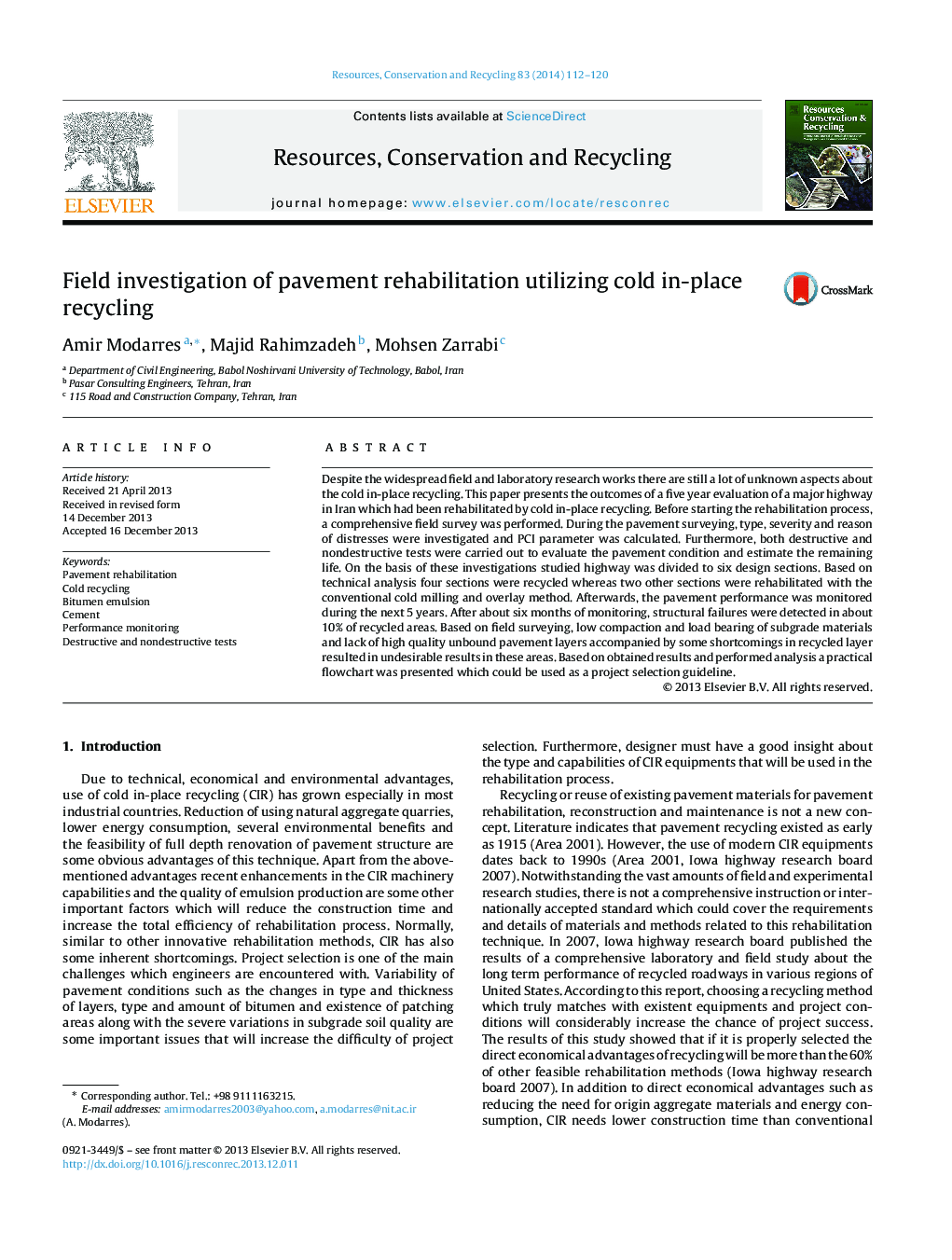| Article ID | Journal | Published Year | Pages | File Type |
|---|---|---|---|---|
| 7495513 | Resources, Conservation and Recycling | 2014 | 9 Pages |
Abstract
Despite the widespread field and laboratory research works there are still a lot of unknown aspects about the cold in-place recycling. This paper presents the outcomes of a five year evaluation of a major highway in Iran which had been rehabilitated by cold in-place recycling. Before starting the rehabilitation process, a comprehensive field survey was performed. During the pavement surveying, type, severity and reason of distresses were investigated and PCI parameter was calculated. Furthermore, both destructive and nondestructive tests were carried out to evaluate the pavement condition and estimate the remaining life. On the basis of these investigations studied highway was divided to six design sections. Based on technical analysis four sections were recycled whereas two other sections were rehabilitated with the conventional cold milling and overlay method. Afterwards, the pavement performance was monitored during the next 5 years. After about six months of monitoring, structural failures were detected in about 10% of recycled areas. Based on field surveying, low compaction and load bearing of subgrade materials and lack of high quality unbound pavement layers accompanied by some shortcomings in recycled layer resulted in undesirable results in these areas. Based on obtained results and performed analysis a practical flowchart was presented which could be used as a project selection guideline.
Related Topics
Physical Sciences and Engineering
Energy
Renewable Energy, Sustainability and the Environment
Authors
Amir Modarres, Majid Rahimzadeh, Mohsen Zarrabi,
